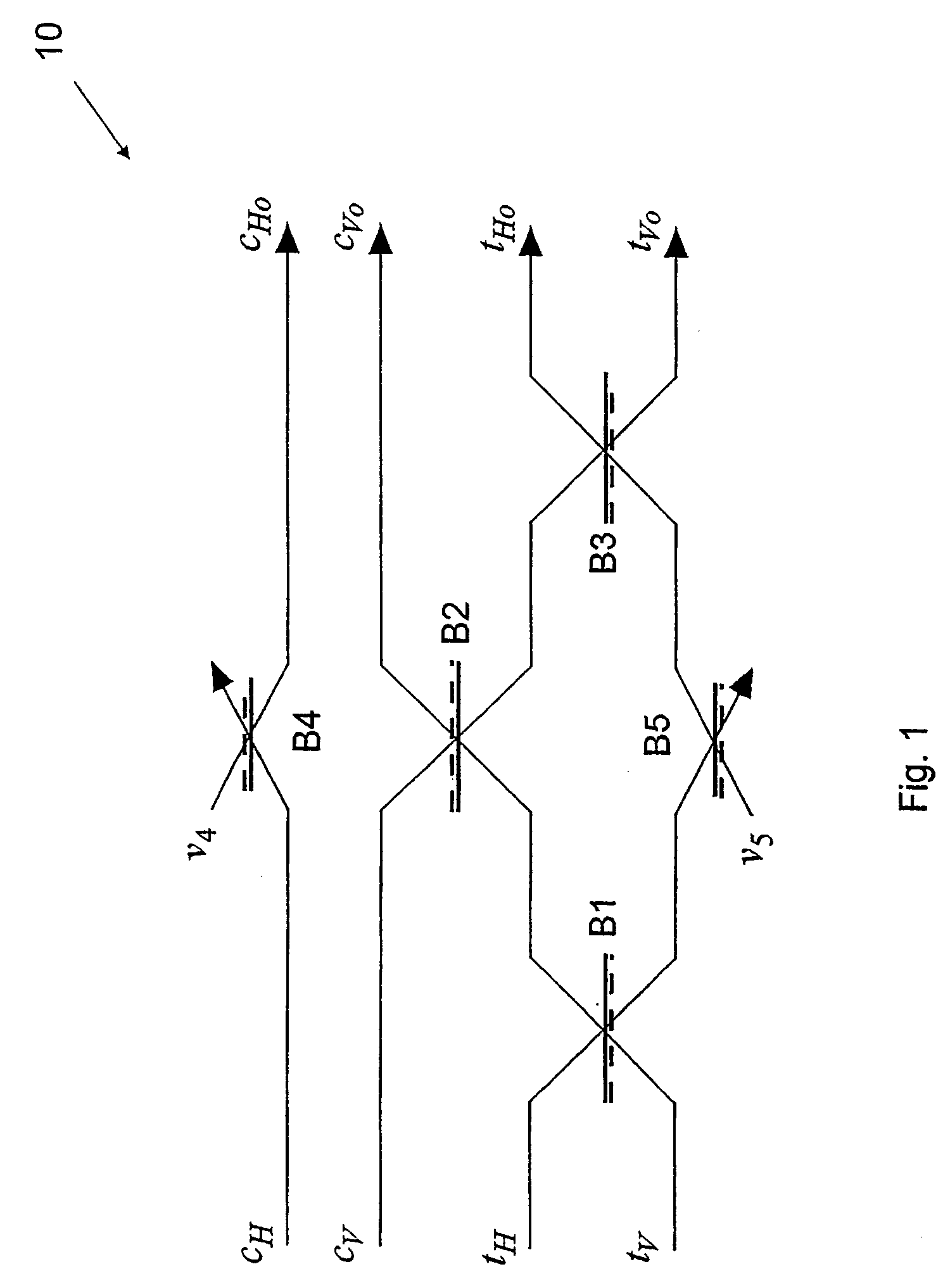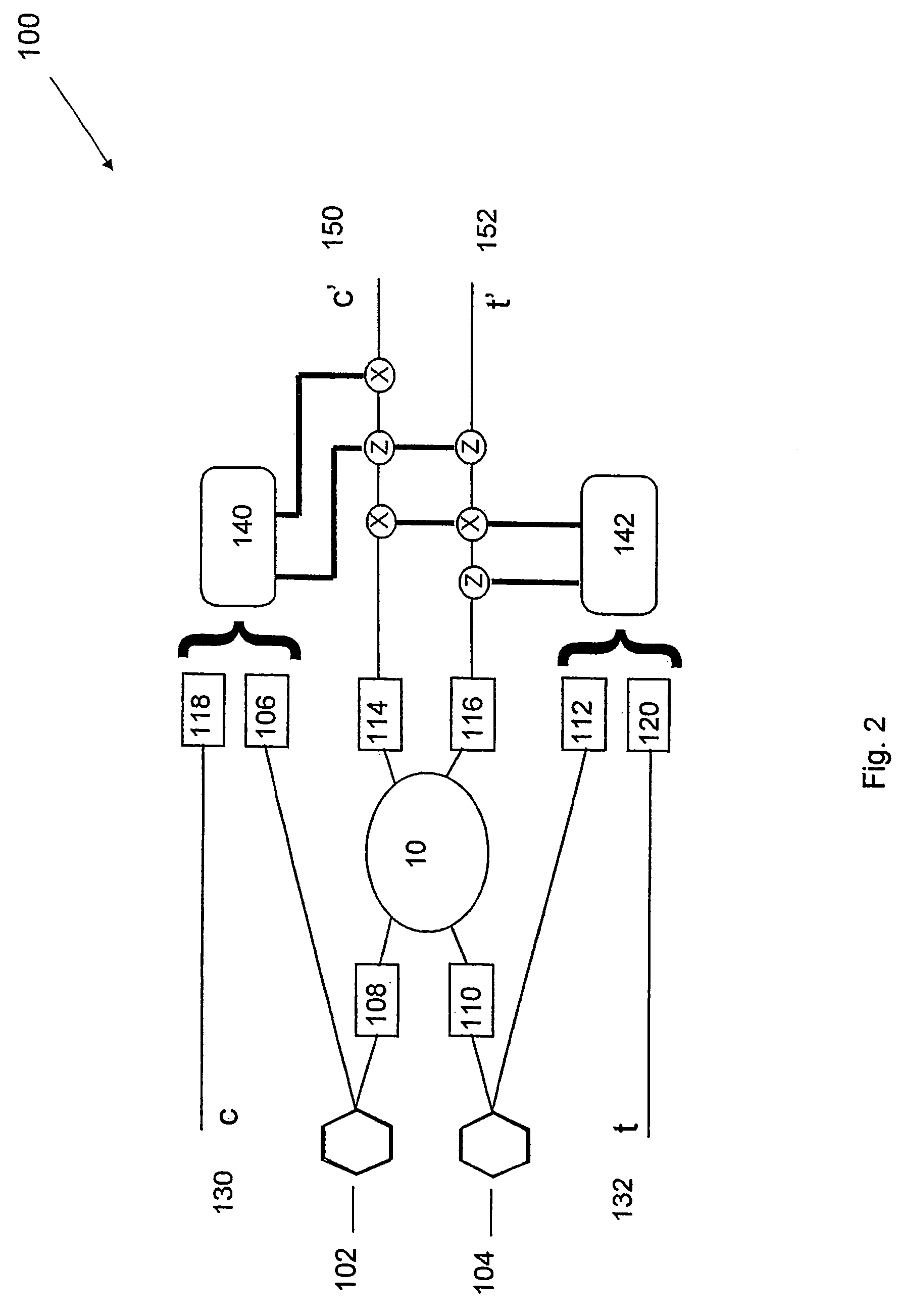Quantum optical CNOT gate
a quantum optical and gate technology, applied in the field of nondeterministic quantum cnot gates, can solve the problem that two qubit gates are not easily implemented in optics
- Summary
- Abstract
- Description
- Claims
- Application Information
AI Technical Summary
Benefits of technology
Method used
Image
Examples
Embodiment Construction
1. Non-Deterministic Quantum CNOT Gate
[0023]Referring first to FIG. 1, the non-deterministic quantum CNOT gate 10 comprises five beamsplitters, B1, B2, B3, B4, and B5 which are all assumed asymmetric in phase. That is, it is assumed that the operator input / output relations (the Heisenberg equations) between two input mode operators (ain and bin) and the corresponding output operators (aout and bout) for the beamsplitters have the general form:
[0024]aout=ηain+1-ηbinbout=1-ηain-ηbin(1)
where η (1−η) is the reflectivity (transmitivity) of the beamsplitter. Reflection off the bottom produces the sign change except for B2 and B4 which have a sign change by reflection off the top. This phase convention simplifies the algebra but other phase relationships will work equally well in practice. Beamsplitters B1 and B3 are both 50:50 (η=0.5). The beamsplitters B2, B4 and B5 have equal reflectivities of one third (η=0.33).
[0025]We employ dual rail logic such that the “control in” ...
PUM
 Login to View More
Login to View More Abstract
Description
Claims
Application Information
 Login to View More
Login to View More - R&D
- Intellectual Property
- Life Sciences
- Materials
- Tech Scout
- Unparalleled Data Quality
- Higher Quality Content
- 60% Fewer Hallucinations
Browse by: Latest US Patents, China's latest patents, Technical Efficacy Thesaurus, Application Domain, Technology Topic, Popular Technical Reports.
© 2025 PatSnap. All rights reserved.Legal|Privacy policy|Modern Slavery Act Transparency Statement|Sitemap|About US| Contact US: help@patsnap.com



